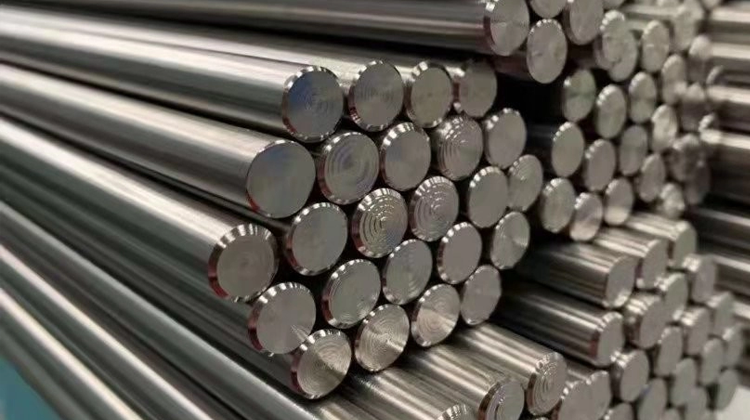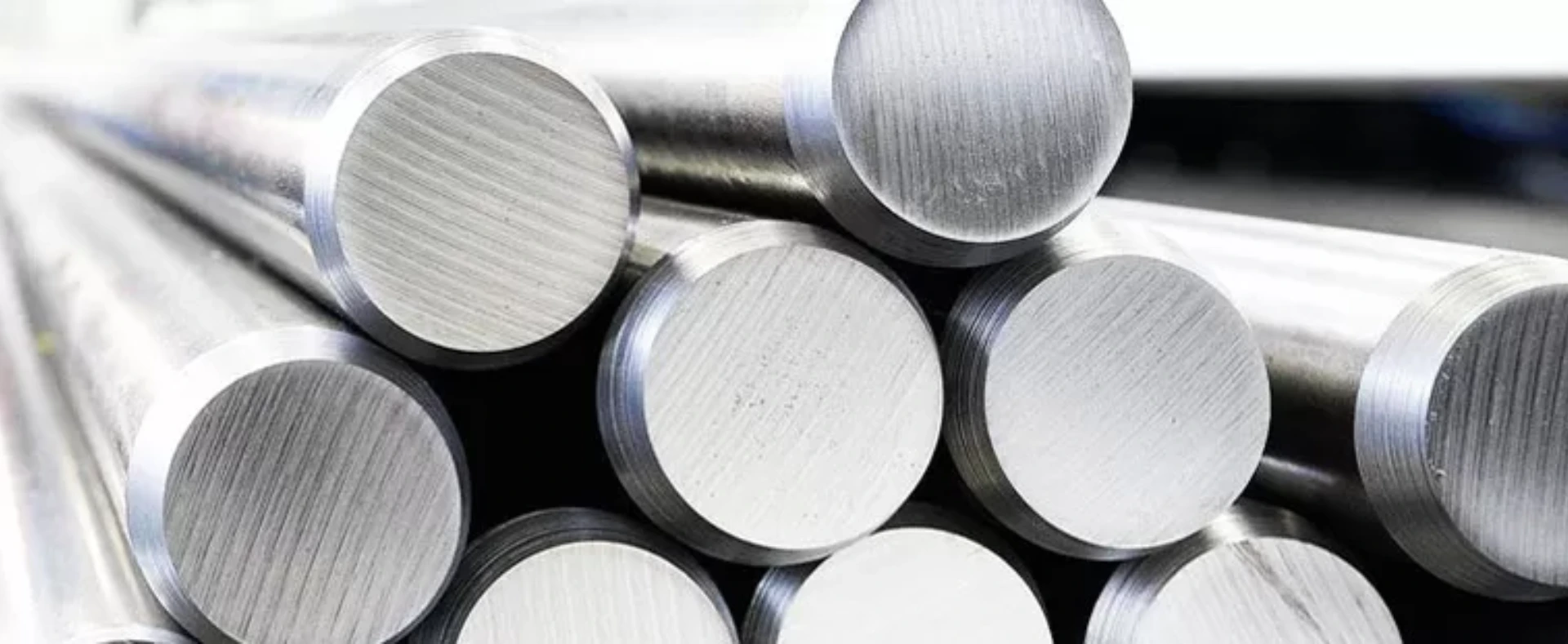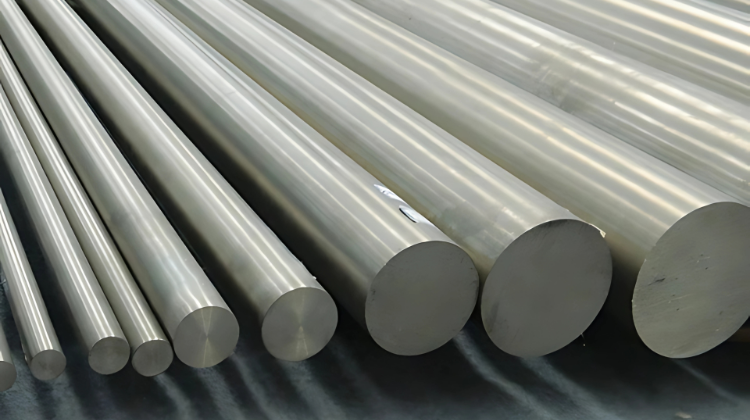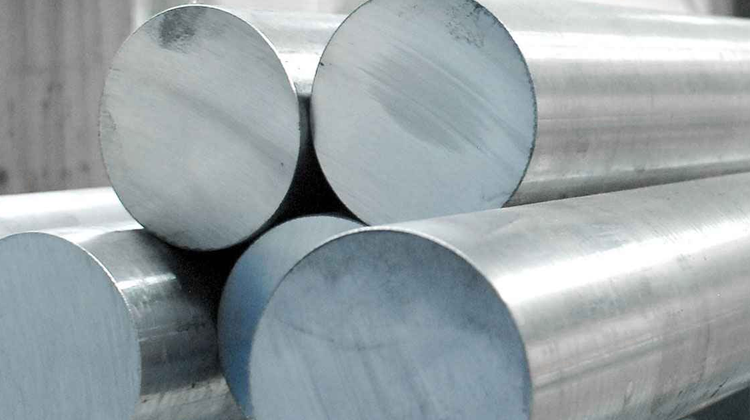
When it comes to designing aircraft, spacecraft, and defense systems, material choice is not just a technical decision – it’s a mission-critical one. Aerospace engineers face a constant challenge: finding materials that combine exceptional strength, low weight, and superior resistance to extreme environments. This is where titanium round bars prove indispensable.
Thanks to their high strength-to-weight ratio, excellent corrosion resistance, and ability to withstand extreme temperatures, titanium round bars have become a cornerstone of modern aerospace engineering. From fighter jets to spacecraft, titanium ensures performance, reliability, and safety in some of the most demanding environments on Earth – and beyond.
1. The Unique Properties of Titanium Round Bars
1.1 High Strength-to-Weight Ratio
Titanium’s density is about 40% less than steel, yet it offers comparable – and in some cases superior – strength. This makes titanium round bars ideal for aerospace structures where reducing weight directly translates to better fuel efficiency, increased payload capacity, and longer flight ranges.
1.2 Corrosion Resistance
In aerospace applications, components face harsh atmospheric conditions, including high humidity, salt spray, and oxidizing environments. Titanium naturally forms a protective oxide layer, ensuring long-lasting corrosion resistance without the need for heavy coatings or treatments.
1.3 Temperature Resistance
Jet engines, spacecraft, and re-entry vehicles experience extreme heat and temperature fluctuations. Titanium maintains structural integrity and mechanical strength at temperatures up to 600°C (1,112°F), making it ideal for turbine components, exhaust systems, and heat shields.
2. Titanium Round Bars in Aerospace Structures
2.1 Aircraft Frames and Landing Gear
Titanium’s combination of strength and low weight allows for lighter yet stronger aircraft frames. Landing gear systems benefit from titanium’s fatigue resistance, ensuring reliability through thousands of takeoffs and landings.
2.2 Jet Engine Components
In jet engines, titanium round bars are used to machine fan blades, compressor discs, and casings. These components endure high stress, vibration, and heat, and titanium’s stability under such conditions extends service life and reduces maintenance costs.
2.3 Fasteners and Connectors
Even small components like fasteners are critical in aerospace safety. Titanium fasteners resist corrosion and galling, making them suitable for fuel systems, hydraulic assemblies, and structural joints in both commercial and defense aircraft.
3. Titanium in Defense Applications
3.1 Fighter Jets and Military Aircraft
Military aircraft demand superior maneuverability, speed, and stealth. Titanium’s low radar signature, strength, and heat resistance make it a material of choice for fuselage frames, armor plating, and engine parts in fighter jets such as the F-22 Raptor and F-35 Lightning II.
3.2 Naval Aviation and Aircraft Carriers
Titanium’s corrosion resistance is critical for aircraft operating from carriers, where exposure to saltwater can degrade conventional metals rapidly. Titanium components extend service life and reduce maintenance cycles in these harsh marine environments.
3.3 Missiles and Space Defense Systems
Missiles and defense spacecraft require materials that are lightweight for speed but strong enough to withstand G-forces during launch and re-entry. Titanium round bars deliver that balance.
4. Manufacturing Titanium Round Bars for Aerospace Standards
Producing titanium round bars for aerospace isn’t just about metallurgy – it’s about meeting stringent industry standards such as:
- ASTM B348 – Standard specification for titanium and titanium alloy bars and billets.
- AMS 4928 – Aerospace Material Specification for titanium alloys in round bars.
Aerospace-grade titanium round bars are manufactured through precision forging, heat treatment, and ultrasonic inspection to ensure zero defects, tight tolerances, and uniform grain structure.
5. Benefits of Using Titanium Round Bars in Aerospace Engineering
- Weight Reduction – Improves aircraft efficiency and reduces fuel consumption.
- Extended Lifespan – Corrosion and fatigue resistance reduce maintenance frequency.
- Performance at Extreme Temperatures – Maintains integrity from freezing altitudes to scorching engine compartments.
- Versatility – Can be machined into a wide variety of aerospace components.
- Sustainability – Titanium is recyclable, aligning with aerospace sustainability goals.
6. Real-World Examples of Titanium in Aerospace
- Boeing 787 Dreamliner – Over 15% of the aircraft’s airframe is made from titanium alloys, including round bar-based components.
- SpaceX Falcon Rockets – Uses titanium for grid fins and heat shields due to its high temperature tolerance.
- Lockheed Martin F-35 – Extensively employs titanium in load-bearing structures and engine parts.
7. The Future of Titanium Round Bars in Aerospace
With the rise of hypersonic aircraft, reusable spacecraft, and electric propulsion systems, the demand for titanium round bars is set to grow. Ongoing research is developing new titanium alloys with even greater strength, fatigue resistance, and cost efficiency, ensuring titanium’s position as a core aerospace material for decades to come.
Titanium round bars are more than just a raw material – they are the structural backbone of modern aerospace engineering. Their unmatched combination of strength, weight savings, temperature stability, and corrosion resistance ensures they will remain a top choice for aerospace and defense manufacturers worldwide.
Whether it’s keeping a commercial jet fuel-efficient, enabling a fighter jet to withstand extreme maneuvers, or protecting a spacecraft during re-entry, titanium round bars deliver the reliability and performance that modern aerospace demands.
Related Posts
Inconel 718 Round Bar – The Ultimate Alloy for High-Performance Applications
Inconel 718 Round Bar is one of the most trusted and versatile nickel-based superalloys in…
Why Inconel 625 is Ideal for Aircraft Exhaust Systems and Engine Components
When designing an aircraft, engineers face one constant challenge: finding materials





